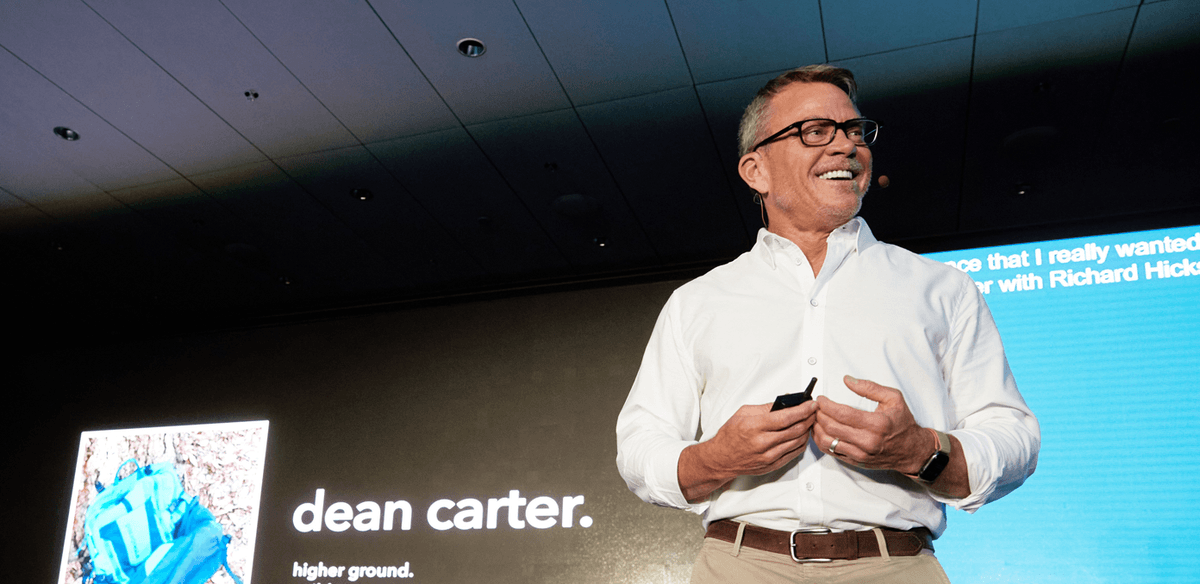Guild recently brought together HR executives, learning innovators and industry thought leaders for the Guild Opportunity Summit to tackle today’s toughest workforce challenges.
While many attendees entered the conference expecting to gain strategies to drive attraction and retention, or how to optimize education benefits, they left with something even greater — community, inspiration, and innovations for the years ahead.
We invite you into our community as we share the most impactful insights we took away from this year's Summit.
1. Employees today want opportunity — and they want to find it with their current employers
Although “quiet quitting” and “The Great Resignation” have dominated the headlines, after numerous speaker presentations, shared experiences in small group workshops, and research shared, summit attendees agreed on a new perspective.
Employees today don’t want to quit and leave their current companies. They feel forced to go when they see no path to growth or career advancement.
Guild co-founder & CEO, Rachel Romer, set the backdrop for this shift in employee expectations in her welcome address. Romer cited that out of the 150 million working Americans, 48% don’t have the skills they need to advance in their careers today. Less than one third have the skills of the future needed for jobs 5-10 years out.¹

Too many American workers lack the skills to survive the future of work which means problems for today’s jobs but a crisis for the roles of tomorrow.
To complicate matters, the automation of certain roles and new software being integrated for business efficiencies makes today’s frontline workers wonder if their job security is also at risk. Are they going to be replaced by a machine or AI platform?
The linear career trajectory of yesterday's jobs and skill sets has evolved into a myriad pathways to various roles across the business.
While exciting to know that so many avenues are open, it can also be daunting to navigate without the right support, skill building, and educational access.
All this to say that there is a seismic shift underfoot — an awakening for frontline workers inciting both optimism and fear around their career trajectory.
Insights from Guild’s American Worker Survey Report codified these sentiments after polling 1,800 U.S. workers on their current roles and what they expect from employers.
76% of Americans don’t feel they currently have the skills needed to advance to the next job²
Two-thirds of workers want to move into a new role. More than half of them hope it’s at their same company³
But 74% of workers said if offered a similar job with a different employer offering additional education and career guidance opportunities, they would be “likely” or “very likely” to leave
2/3 of U.S. workers want to move into a new role. More than half of them hope it's at their current company.
McKinsey Report 2022, The Great Attrition is Making Hiring Harder
2. Employers investing in career pathways are building tomorrow's roles with today's talent
Veteran HR analyst and speaker Josh Bersin spoke about the talent and recruitment landscape post pandemic. He noted that roughly ⅓ of America's workforce changed jobs in the last year. 45% of those people changed industries.¹
He also highlighted the findings from a 2022 McKinsey study citing that 41% of people who left their job between April 2021-April 2022 walked away because of lack of career growth opportunities.³
Turnover in frontline positions is high, engagement — a challenge and changing business demands — a constant catalyst for evolving talent strategies. According to Bersin, reusing, skilling, engaging, and retaining existing talent will become business survival.
HR leaders in a panel Q&A on the complexities of today’s frontline workforce agreed.
Tamla Oates-Forney (EVP, CHRO | USAA)
Johanna Söderström (EVP, CPO | Tyson Foods)
Allan Calonge (CPO | Bon Secours Mercy Health)
and David Mafe (CDO & VP HR at UC Health)
These panelists all shared their strategic talent initiatives around internal mobility and highlighted the importance of workforce planning to identify future roles.
Abandoning the “post and pray” mentality, the panelists shifted focus to growing internal talent and winning the hearts and minds of employees with opportunity.
From offering additional PTO hours to pursue education, to immigration and ESL classes to assist with citizenship, to extending education benefits to employee dependents, the commitment to employee growth was authentic, palpable, and impactful.
Career Pathways: Building Tomorrow's Workforce Today
Bersin’s most recent research report on the value of career advancement, Career Pathways: Building Tomorrow’s Workforce Today, was unveiled at the Summit, and supported the power of this investment.
After surveying over 1,000 global organizations and 94 leading L&D practices, his team found that creating extensive opportunities for career growth was the singular most impactful practice for driving business, innovation and talent outcomes. (1)
“Everything we do in L&D, HR and leadership to enable learning, upskilling, and reskilling is a means to an end, not the end in itself” says Bersin.
“Employee self-directed learning is no longer enough — employer-facilitated career growth wins the business game.”
"Employee self-directed learning is no longer enough — employer-facilitated career growth wins the business game."
Josh Bersin at the Guild Opportunity Summit
3. It’s time to rethink assumptions and engender a mindset shift to grow untapped talent
In a live podcast recording at the Summit with organizational psychologist and best selling author, Adam Grant and Rachel Romer, Grant shared his perspectives on education. “Education is the code to a combination lock” said Grant.
"Once you have that code you can open all kinds of doors.”
Yet to learn is to be vulnerable. Grant noted that for frontline workers often in positions of lower power and status with limited opportunity, that vulnerability can be deeply intimidating.
It’s that much harder when pursuing education and internal mobility isn’t supported — be that from a manager or from the top down.
Toxic cultures grow, and burnout follows.
"Cultural toxicity is 10x more significant in explaining why some organizations are hanging onto their people and others are failing at it,” said Grant.
"Cultural toxicity is 10x more significant in explaining why some organizations are hanging onto their people and others are failing at it."
Adam Grant at the Guild Opportunity Summit
“This isn’t just something that matters to the health and wellbeing of your employees. It actually affects your ability to attract and retain talented people."
But thinking about frontline workers as a talent pipeline for gateway and destination roles isn’t always a universally accepted narrative.
Work is often required to win over the hearts and minds of leadership, managers, and employees.
As one speaker noted “all of us can reflect on the moment where somebody said, I believe in you. I know you can do more. So we teach our managers about culture and what’s expected of them to drive engagement, to support and to grow their talent.”
Panelists, speakers, and attendees all touched on the importance of instilling a mindset shift around the talent potential of frontline workers.
They encouraged fellow attendees to share data on the cost of employee turnover and the revenue drain from vacant roles versus the ROI on investing in growing existing talent.
Challenge pervasive myths around what will and won’t work, who and isn’t capable, and be leaders for change. Show your organization, through data and employee testimonials, that these programs can be successful. With that mindset shift can come great opportunity.
As NYT bestselling author and journalist David Gelles shared during his presentation “how companies treat their people is how America becomes the country we live in.”
It’s time to embrace big ideas for change, build community and equalize opportunity for today’s talent.
Let’s see how far your talent can grow.



